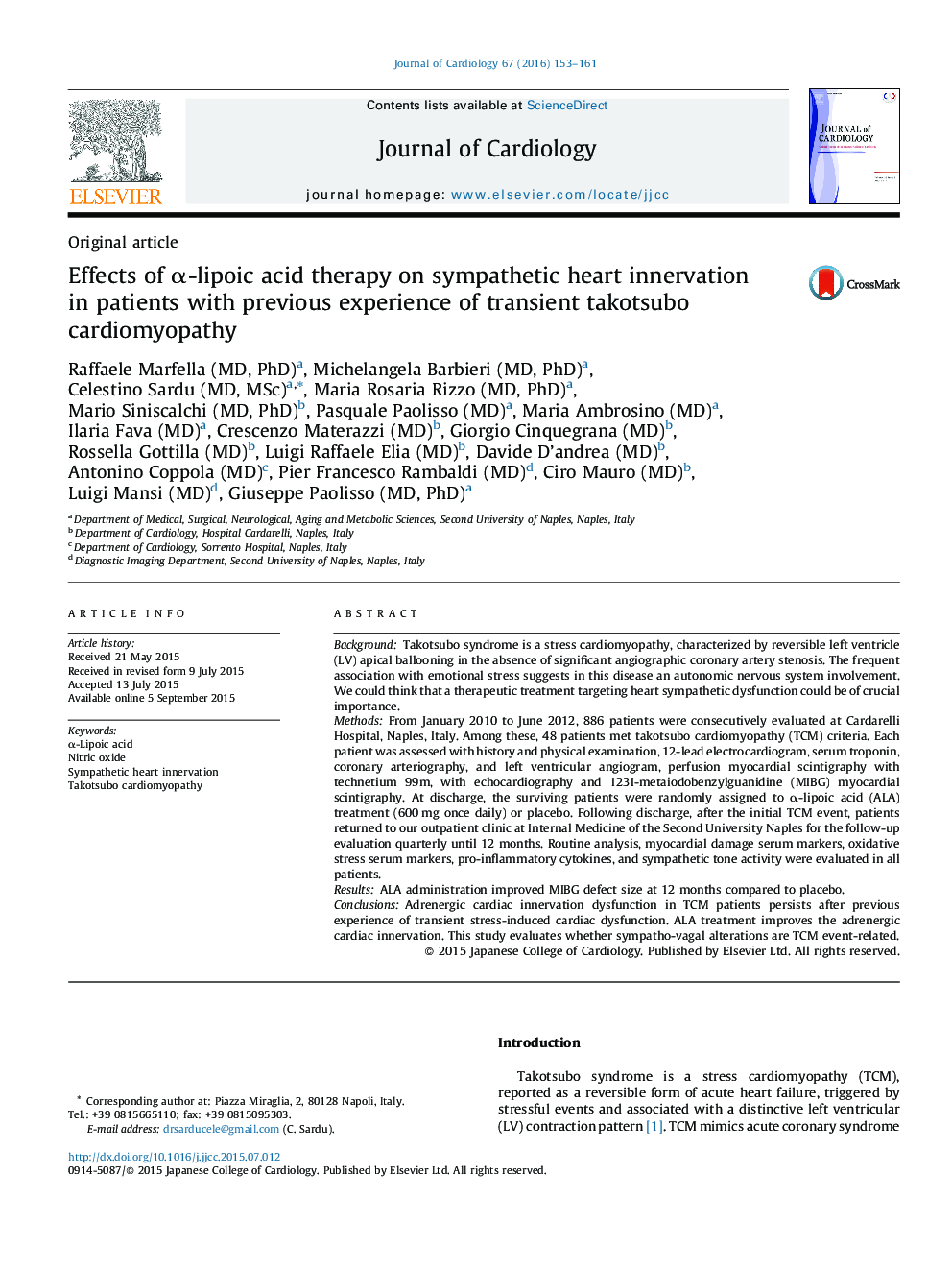| Article ID | Journal | Published Year | Pages | File Type |
|---|---|---|---|---|
| 2962824 | Journal of Cardiology | 2016 | 9 Pages |
BackgroundTakotsubo syndrome is a stress cardiomyopathy, characterized by reversible left ventricle (LV) apical ballooning in the absence of significant angiographic coronary artery stenosis. The frequent association with emotional stress suggests in this disease an autonomic nervous system involvement. We could think that a therapeutic treatment targeting heart sympathetic dysfunction could be of crucial importance.MethodsFrom January 2010 to June 2012, 886 patients were consecutively evaluated at Cardarelli Hospital, Naples, Italy. Among these, 48 patients met takotsubo cardiomyopathy (TCM) criteria. Each patient was assessed with history and physical examination, 12-lead electrocardiogram, serum troponin, coronary arteriography, and left ventricular angiogram, perfusion myocardial scintigraphy with technetium 99m, with echocardiography and 123I-metaiodobenzylguanidine (MIBG) myocardial scintigraphy. At discharge, the surviving patients were randomly assigned to α-lipoic acid (ALA) treatment (600 mg once daily) or placebo. Following discharge, after the initial TCM event, patients returned to our outpatient clinic at Internal Medicine of the Second University Naples for the follow-up evaluation quarterly until 12 months. Routine analysis, myocardial damage serum markers, oxidative stress serum markers, pro-inflammatory cytokines, and sympathetic tone activity were evaluated in all patients.ResultsALA administration improved MIBG defect size at 12 months compared to placebo.ConclusionsAdrenergic cardiac innervation dysfunction in TCM patients persists after previous experience of transient stress-induced cardiac dysfunction. ALA treatment improves the adrenergic cardiac innervation. This study evaluates whether sympatho-vagal alterations are TCM event-related.
